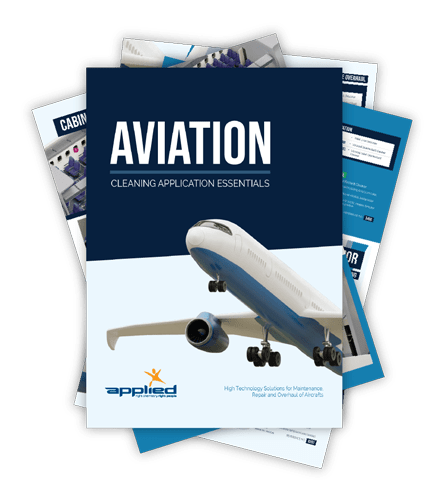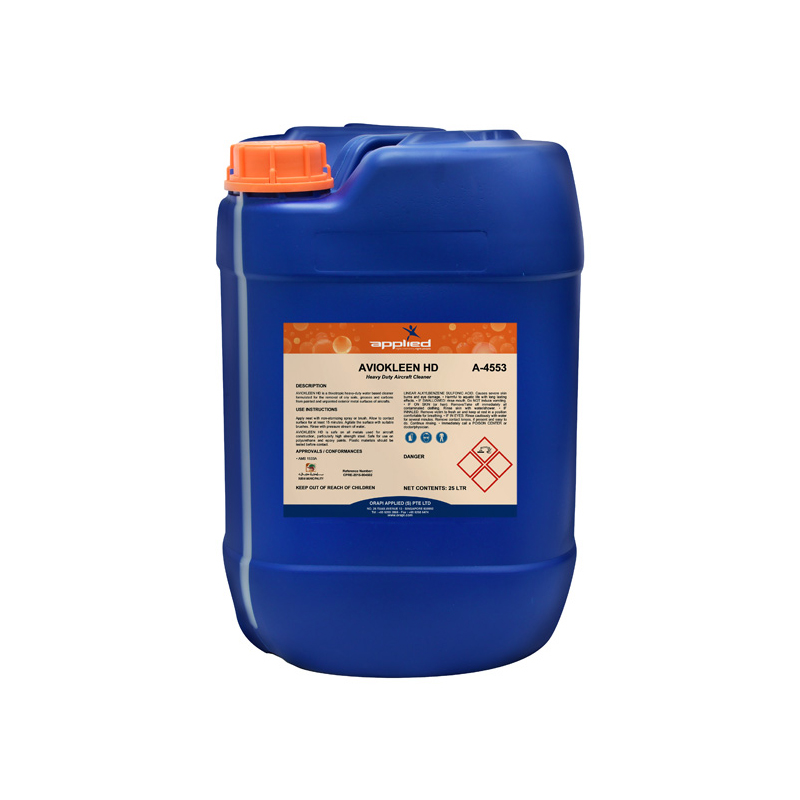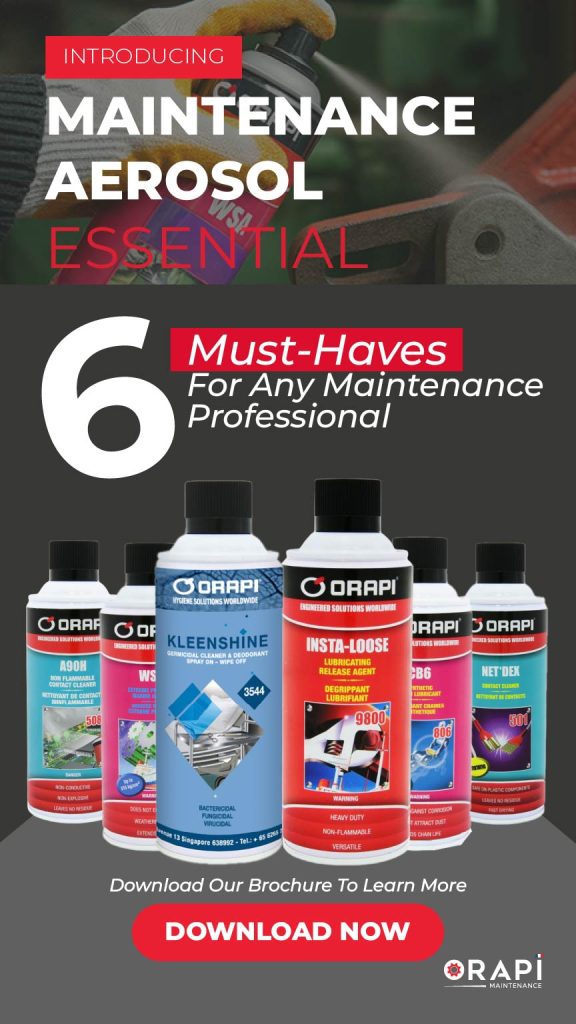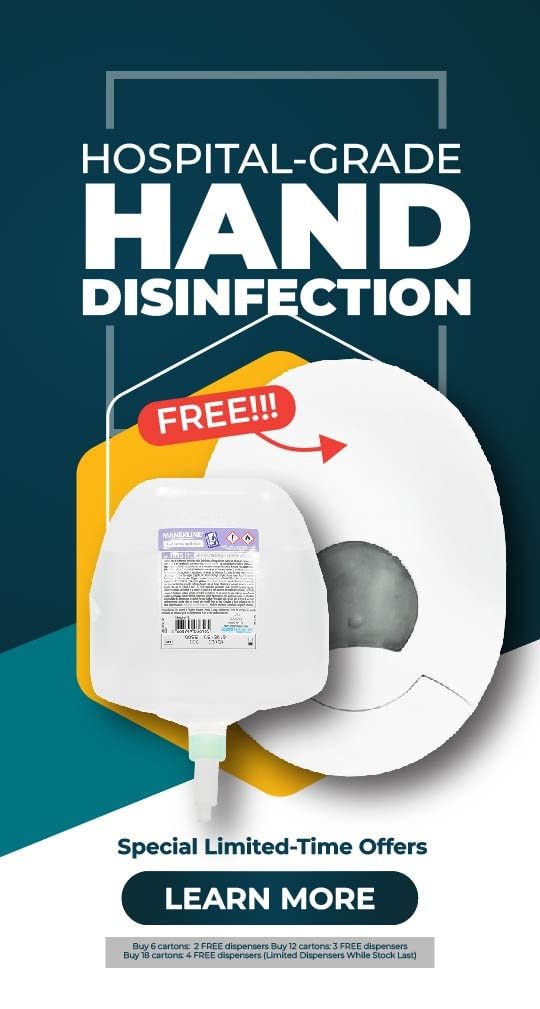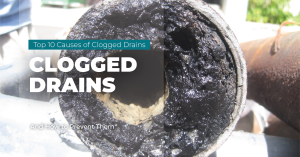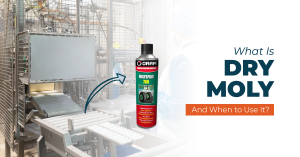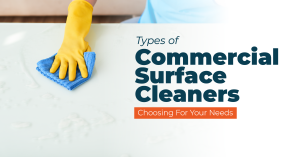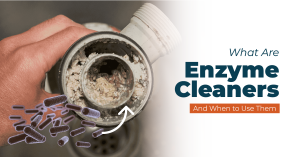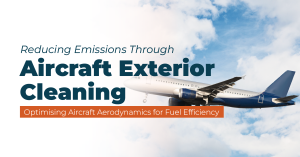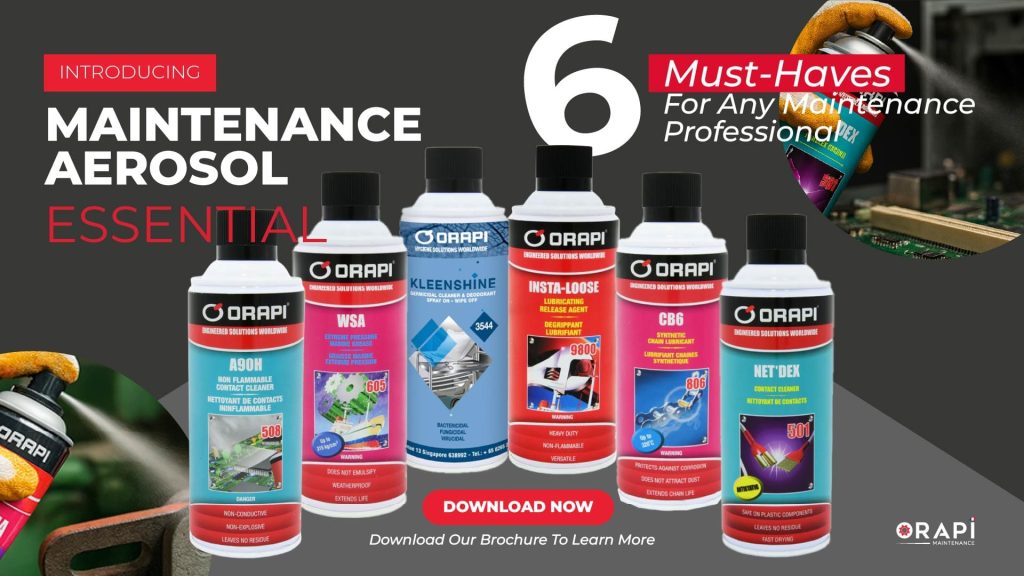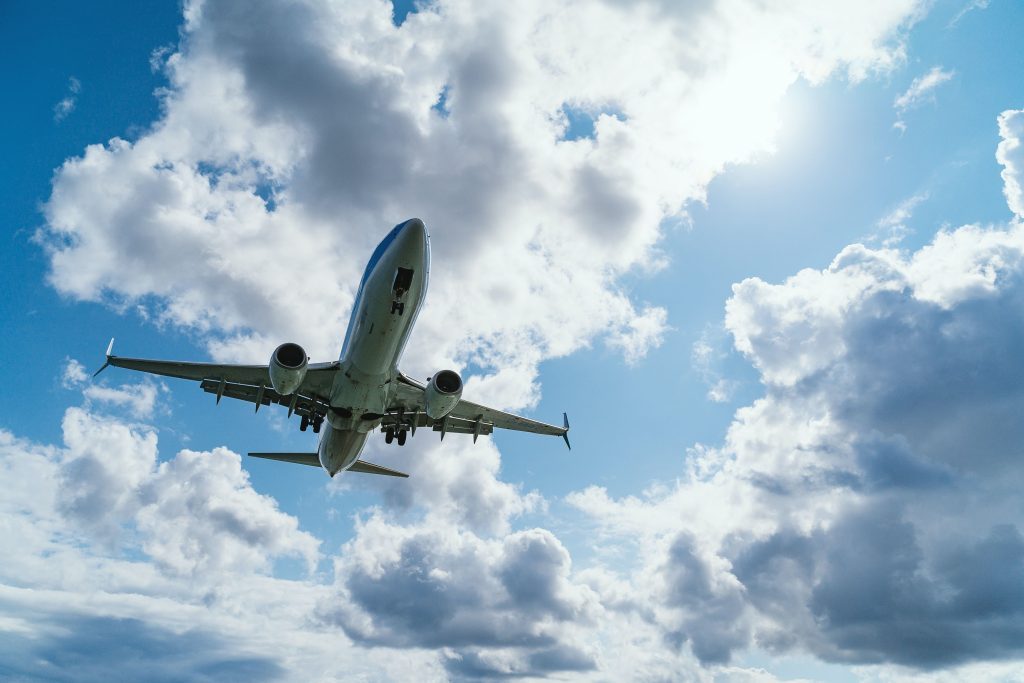
Regular cleaning is a vital part of most aviation maintenance regimes and is not just about maintaining appearances. Keeping equipment, vehicles and workspaces clean is an integral part of taking care of critical infrastructure as well as maintaining a safe and healthy working environment. While an aircraft degreaser specifically serves the purpose of cleaning an aircraft, regular industrial degreasers cover a wide range of applications across almost every conceivable industry, which is why these degreasers often lack certain qualities essential to maintaining the high functionality of aircraft equipment.
Types of Soiling and the Impact on Degreaser Choice
Put simply, “soiling” is any unwanted substance that covers an object. Whilst that could mean almost anything, it is possible to break soils down into two categories:
- Organic soiling is anything derived from living material (including fossil fuels) such as oil, petroleum products, grease, fats, proteins and living matter.
- Inorganic soiling typically includes matter such as scale, minerals, clay, dirt and rust.
Aircraft degreasing operations are often performed expeditiously. A plane quickly pulls into the hangar to have aircraft degreasers applied to the engine and then exits the hangar to resume its flight schedule. This scenario calls for aircraft degreasers that have special characteristics that make them ideal for fast, thorough degreasing operations that can effectively remove both organic and inorganic soiling from jet engines.
Side Effects of Traditional Industrial Degreasers
Traditional industrial degreasers are based on a combination of ingredients that are combined in varying degrees to obtain the desired cleaning/degreasing effect. Some of these ingredients can cause significant unwanted side-effects such as damage to equipment or contamination of waste-water.
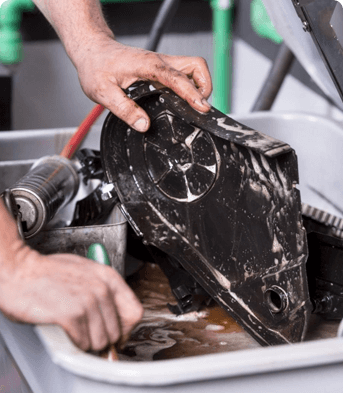
These typical problematic ingredients include:
- Builders
- Inhibitors
- Chelating Agents
- Sequestering Agents
- Saponifiers
- Emulsifiers
- Strong Inorganic Acids
- Strong Alkalies
- Petroleum Products
These ingredients each have varying degrees of toxicity and physicochemical risks associated with them.
Essential Characteristics of Aircraft Degreasers
On the other hand, aircraft degreasers exhibit many suitable qualities appropriate for aviation MRO.
No Flashpoint
Because the engines of jet planes are degreased while they are still hot, and even while certain engine parts remain “electrified” from steady use, aircraft degreasers have an exceptionally high flash point or no flash point at all. Therefore, aircraft degreasers prevent injuries to workers and preserve ultra-expensive jet engines from fires.
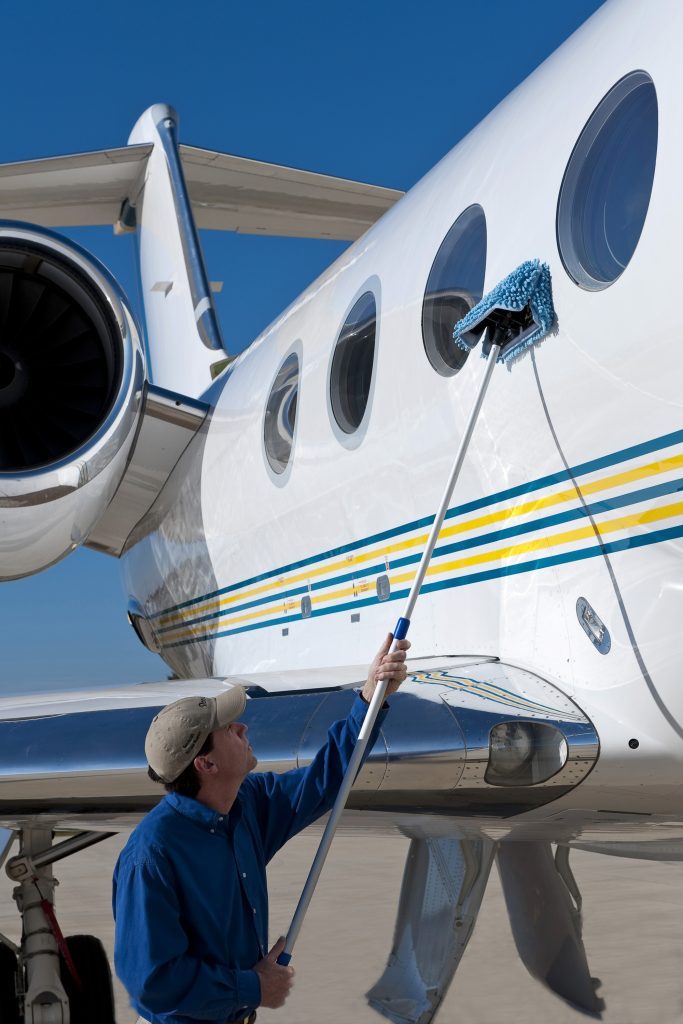
No Moisture Condensation
To protect non-stainless steel parts in the engine compartment against oxidation, most aircraft degreasers feature no moisture condensation. The less wetness an airplane engine experiences, the longer its components can be expected to remain in service.
However, if an aircraft degreaser has a water-based formula, they tend to be non-corrosive and leaves no residue behind, which brings us to our next point…
No Residual Cleaner Left on Parts
Cleaner residue left on engine parts essentially sabotages the cleaning operation. Instead of repelling dirt and grime, the residue can actually increase the rate at which soils collect on the engine’s various parts. It is similar to mopping a kitchen floor with a cleaner that leaves behind a residue; the floor tends to get dirtier faster than it would if no surface residue were present. Following this analogy, aircraft degreasers leave little to no residue so that the plane looks as well as feels clean.
Non-Toxic Cleaning Formulation
Toxicity can have a major impact on a company and its workers. A special ventilation system and high-level personal protective equipment (PPE) would be necessary expenses. Without them, workers could acquire chronic health problems that lead to costly injury settlements, high-end workers’ compensation payouts, and loss of productivity. However, degreasers are non-corrosive. Therefore, toxicity isn’t a problem for the engine that is cleaned.
Combative Cleaning Action
Aircraft degreaser applications have a quick turnaround time; that is, aircraft degreasers have a combative cleaning action. In the minds of many, combative cleaning action might be associated with the use of toxic degreasers. However, special technology that formulates highly combative aircraft degreasers have a non-toxic profile and is now readily available in the market.
Comparison Table
|
Aviation Degreaser |
Industrial Degreaser |
|
Does not damage the surface of aircrafts |
May damage the surface of aircrafts |
|
Low or no flashpoint |
High-low flashpoint |
|
No moisture damage |
May cause some moisture damage to the aircraft |
|
No residue left behind |
Some residue may be left behind depending on what type of industrial degreaser is applied |
|
Non-toxic for the environment |
Toxic solvents hidden in degreasers may cause harm to the environment |
|
Highly combative + non-toxic formula |
Highly combative formula might be toxic |
|
No burn risks |
May pose burn risk to workers if used in large scale |
All in all, aircraft degreasers are called “aircraft” degreasers, for they serve exactly the purpose of “degreasing” aircraft. It might sound like we are stating the obvious but consider this, regular industrial degreasers aren’t necessarily a bad choice for other types of industrial equipment or vehicles, but most certainly, such degreasers are formulated with the intention of degreasing ALL industrial equipment.
Plus, the cons mentioned above might not even be impacts worth considering for degreasing other industrial equipment, but they are certainly worth deliberation for aircraft.
The AVIOKLEEN HD — Heavy Duty Aircraft Degreaser & Cleaner
AVIOKLEEN HD is one of the best aircraft degreasers available in the market. The formula has not only been tried, tested, and loved by many but also met all the criteria mentioned above—non-flammable, free rinsing, no residue, non-toxic, and combative cleaning.
AVIOKLEEN HD is a thixotropic heavy-duty, water-based cleaner formulated for the removal of oily soils, greases and carbons from painted and unpainted exterior metal surfaces of aircraft. It effectively removes jet soils, such as synthetic oil films, heavy greases, carbons and exhaust residues from metal surfaces, underbelly, landing gear, wheel well, flap, etc.
If you want to learn more about the product or make your purchase of it, click the ‘FIND OUT MORE’ button now!
ORAPI RECOMMENDS:
Heavy Duty Aircraft Cleaner
AVIOKLEEN HD is an excellent cleaner for aircraft landing gear, underbelly, wheel wells, flap bays, etc. It also effectively removes oily, grease, and carbon soils, giving optimum brightness and degreasing all painted surfaces and components. AVIOKLEEN HD clings to vertical and overhead surfaces thanks to its viscous formula, which makes it long-lasting and safe on all metal parts
In the same way as AVIOKLEEN HD, AVIOKLEEN II is an economical option if you don’t need a heavy-duty degreaser. It will also work wonders for an aircraft degreaser.
Conclusion
If you want to ensure that the aircraft you’re tending to is thoroughly clean and ready for use, then the best and safest choice would be to use an aircraft degreaser. Of course, industrial degreasers are efficient at cleaning other equipment, and they serve their purpose well when it comes to washing other heavy vehicles, but when it comes to aircraft, they might not make the equipment last as long as aircraft degreasers.
But what’s most important is that you choose an aircraft degreaser that has been tested and has established a good reputation for itself in the market. There are probably a hundred different products out there, but it is hard to know how effective those are at degreasing aircraft. Often, the benefits of the products mentioned are also rather vague, and it’s hard to gauge the specific use for the product. That is why we recommend you use AVIOKLEEN HD because not only do we list the exact benefits you get from using our products, but we are always happy to help you clarify your doubts or recommend a more suitable product.
Complete list of Aircraft MRO + Cleaning Products under 1 Download
